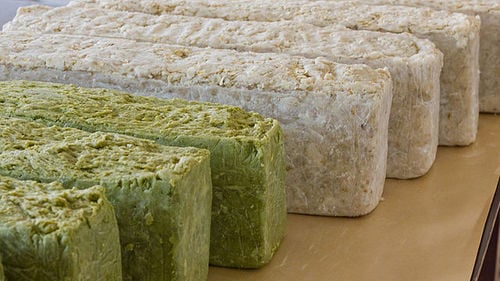
Soap is used for cleaning the human body, clothing, homes and utensils, and other applications.
Usefulness[edit | edit source]
The improvement in hygiene since the Industrial Revolution, including widespread adoption of the use of soap, is considered to be one of the most important factors in the reduction of disease and mortality rates and the boom in human population during the 19th and 20th centuries.
In modern times, soap has been replaced in many applications by detergents. Recently, manufacturers have also begun producing antibacterial soaps, leading to concerns about increased antibiotic resistance in pathogens.
Making soap[edit | edit source]
Chemically, soap is made by reacting fat with lye ("saponification"), and when finished may be solid or semi-liquid. Soap may be made from animal fats such as lard from pigs or vegetable oils (vegetable fats) such as olive oil, coconut oil, or palm oil.
Soap is easily made in small-scale or appropriate technology. (See Soap making.) However, it should be noted that caution is needed, as lye is dangerous and soap-making often involves temperatures of up to 100 degrees C / 212 degrees F.
Environmental impact[edit | edit source]
The environmental impact of soaps and detergents is an important consideration on both large and small scales. For example, environmental effects of soap should be carefully examined in home greywater systems.
See also[edit | edit source]
- User:KVDP/Appropriate_hygiene_manual#Ingredients
- Green cleaning
- Clothing
- Laundry
- Soap making